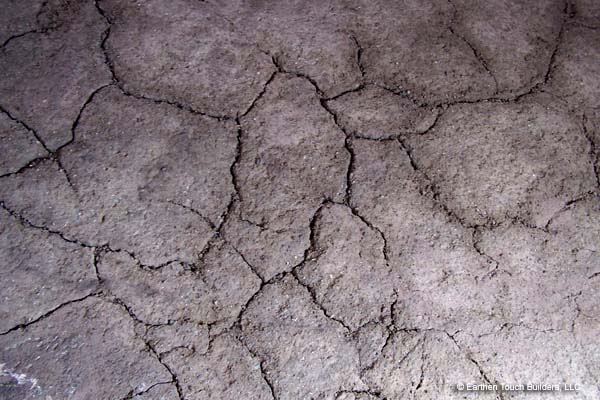Earthen floor crack discovery – seen here. After peeling away the top 1/2″ of this floor, the degree of cracking was fully revealed. Both the living room and guest bathroom showed cracks of this depth. We used a tile scraper machine to remove the top coat in the rooms. It helped us do the task quickly rather than by hand.
We can tell from this reveal quite a bit about the original poured formula. The samples pulled up were crumbly. It was apparent to us that not enough sand was used in the original poured floor. We find this to often be the case when we do earthen floor repair. Often those pouring floors are not using a solid enough mix. Or in addition, the sub floor is prepared incorrectly. And the floors are not sealed properly. Any one of these floors can cause an earthen floor to not hold up. All three would be reason to tear up the old floor and replace the top coat.
Once we saw these deep cracks, we knew we needed to add a repair coat, prior to the new poured top coat planned. So we spent a day with a strong mix, working it into and removing these deep cracks. In some cases we dug down even deeper. The worst thing to have when pouring mud floors is an unstable or cracked sub floor. It will guarantee cracking on the top, thinner coats.


